The 2023 International Hoof-Care Summit celebrates its 20th anniversary at this January’s event. This is also the ninth Summit Mail-In Forging Exercise, so I wanted to create a good challenge of solid forging elements for you. But as much as I want to push you out of your comfort zone with this exercise, I also want to create a practical shoe that you might find useful under the right circumstances. This is the perfect marriage: challenging your skill set and a finished product that can help a horse with a specific problem. Of course, we never want to apply a shoe that isn’t suitable for the horse or its needs.
This diamond-toe, reverse wedge hind shoe is a good solution for an older horse whose fetlock has dropped behind. It creates some relief for horses afflicted with this. For example, I’m working on an older gelding that is rode competitively, but his fetlocks are starting to drop. This shoe has helped this horse. I rarely see a shoe like this used for these horses, however. It is one of my favorite shoes because of the forging elements and its practicality.
When I judge the entries, I don’t want your shoe or the clips racked. Make a consistent reverse wedge. It needs to be thickest at the toe. When you create a wedge shoe, it is hard to maintain the section.
Thank you to VICTORY for sponsoring this challenge again. We’ll place the top finishers at the Summit. You’ll improve your skills and earn a free T-shirt just for entering. You may win the buckle. But remember, it isn’t about winning — it is about the journey. Good luck!

More Forging Challenges
If you like this forging challenge and are looking for other lessons, we have other horseshoes that Craig Trnka shows the steps in forging so that you can try.
To see these instructions for the shoes, visit AmericanFarriers.com/1122, where you’ll find various shoes to make, including:
- Gaited horseshoe
- Sidebone horseshoe
- Concave horseshoe
- Straight-bar horseshoe
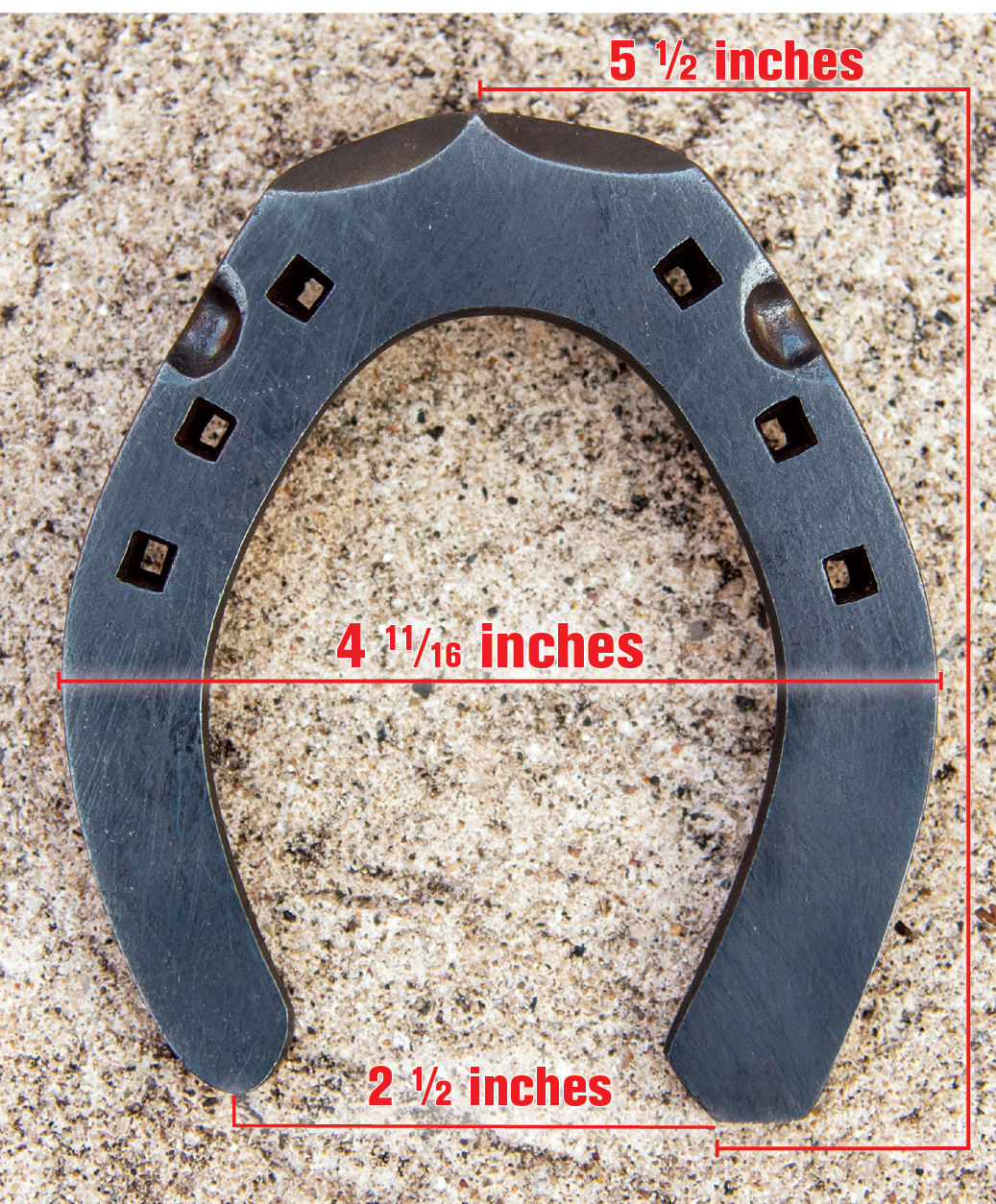
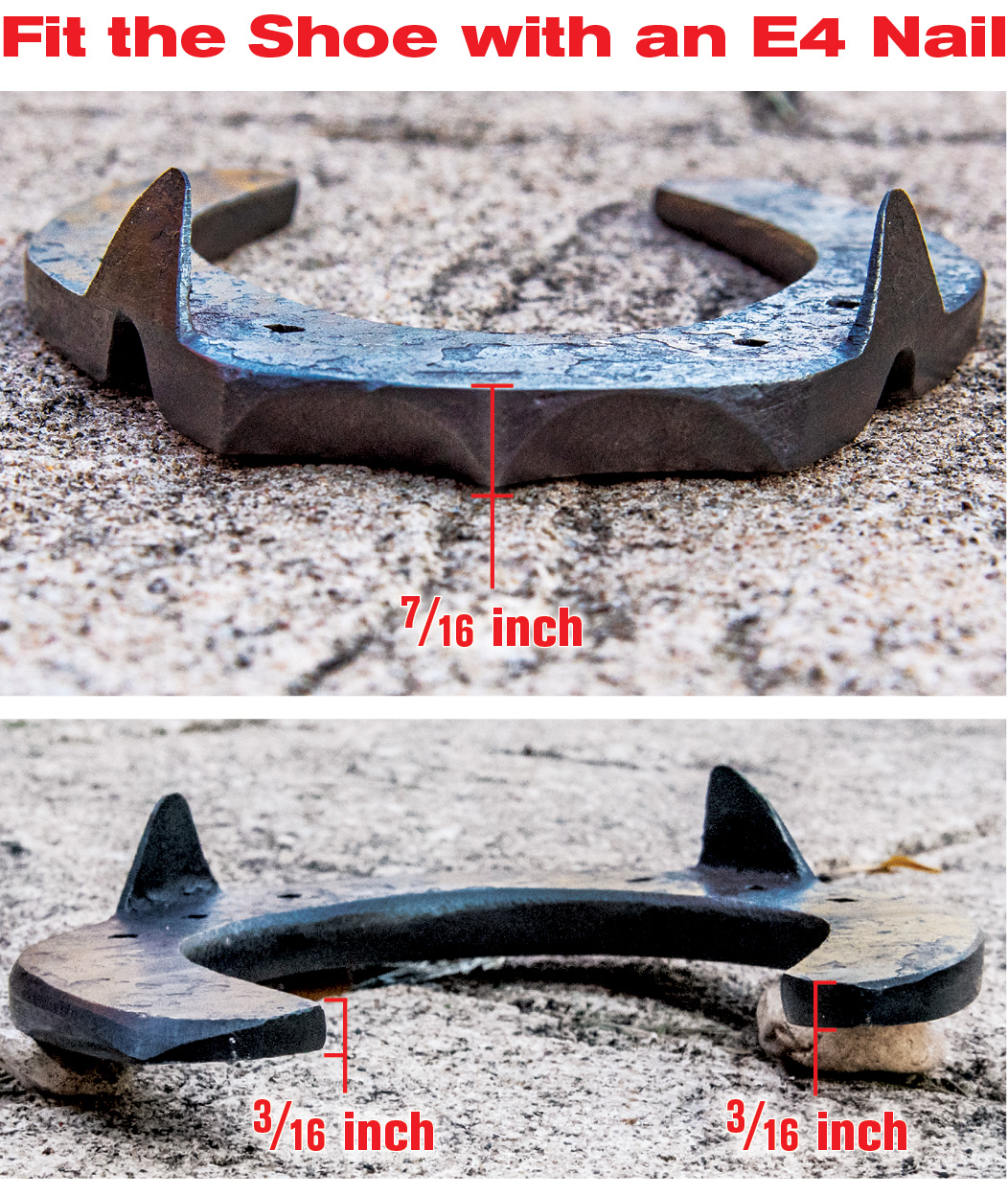
Sponsored by VICTORY, this forging exercise requires making this shoe. You have until Jan. 19, 2023, to mail your entry to and have it arrive at the AFJ office. Read instructions on how to enter on Page 49.
Measurements: 4 inches at the widest part of the shoe, 5 ½ inches from the heels to toe, 2 ½ between heels, heel height at where measured is inch, and inch at the toe.
STEP-BY-STEP

I start with 12 inches of 3/8-inch by 1-inch stock. You can see where I marked with chalk 1/8 inch off center to give a ¼ inch of more material to the lateral side

I bumped about 1 ¾ inches into it and only narrow it from the leading edge of the toe so it mushrooms and becomes thicker before I turn it.
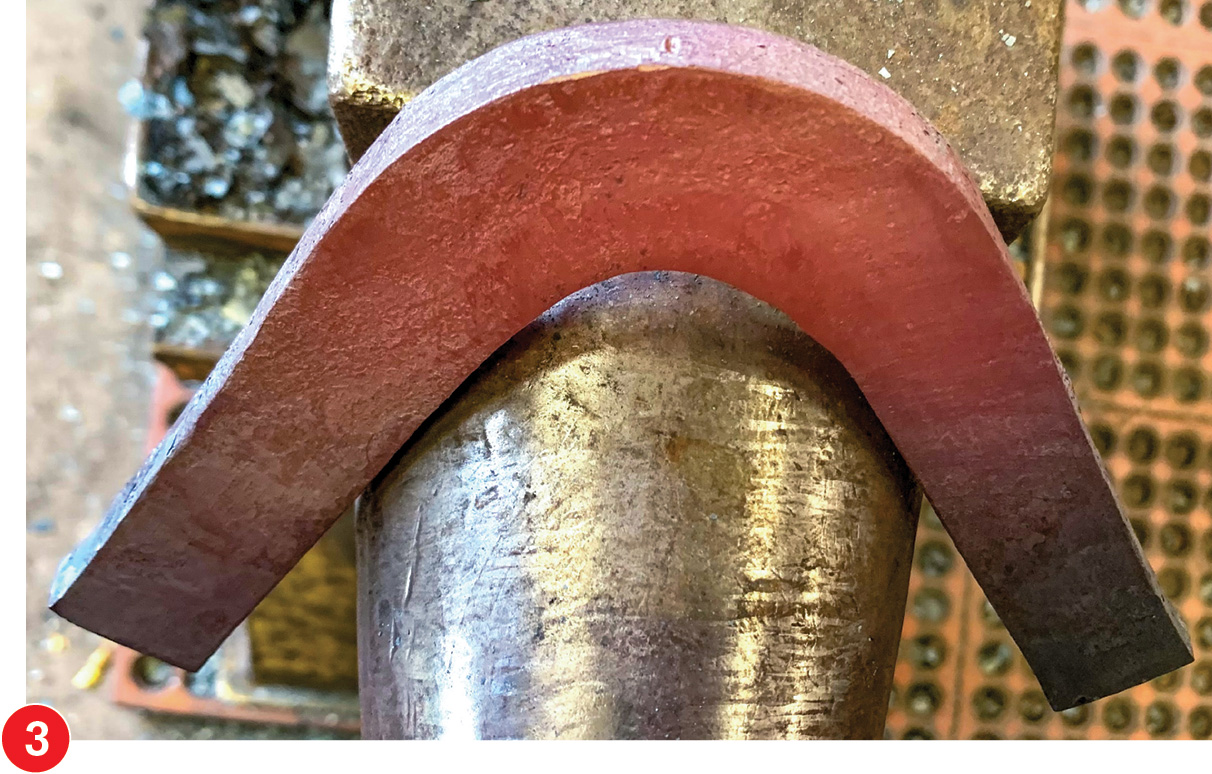
I make my toe bend with my center punch mark up. I am trying to make a tight toe bend, but I don’t want to narrow the stock.
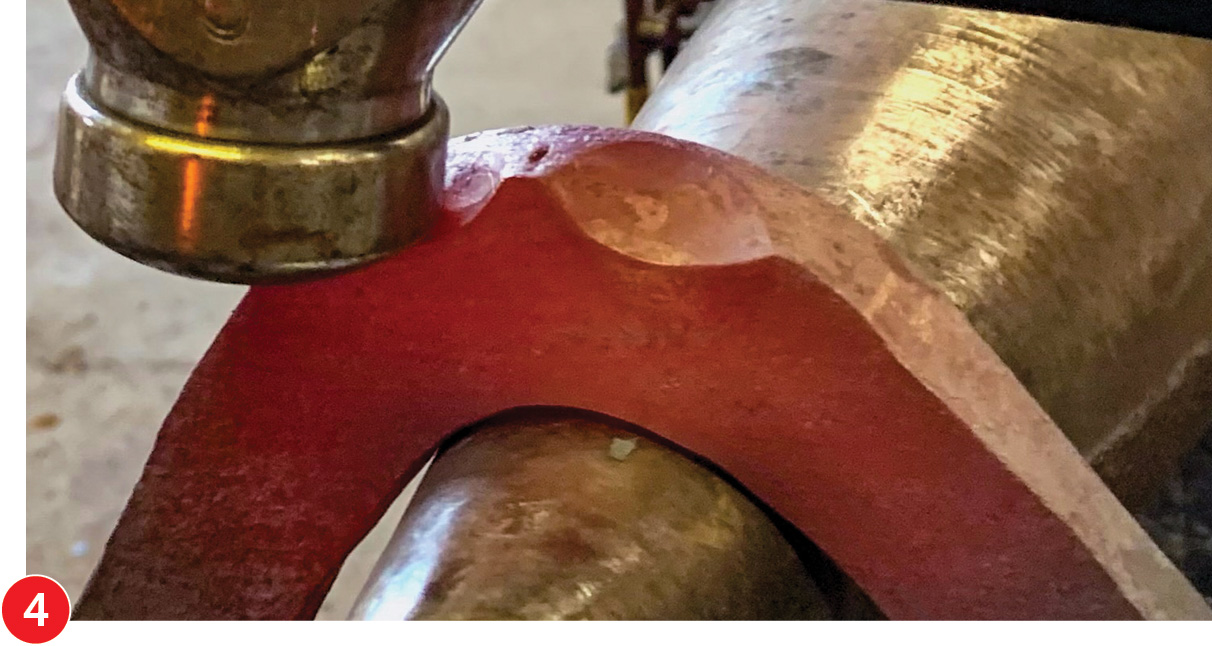
Most round surfaces of hammers are too wide to make the indentations, so I use the edge of the round side of the hammer to start knocking the indentations. Otherwise, the divots will become too big.
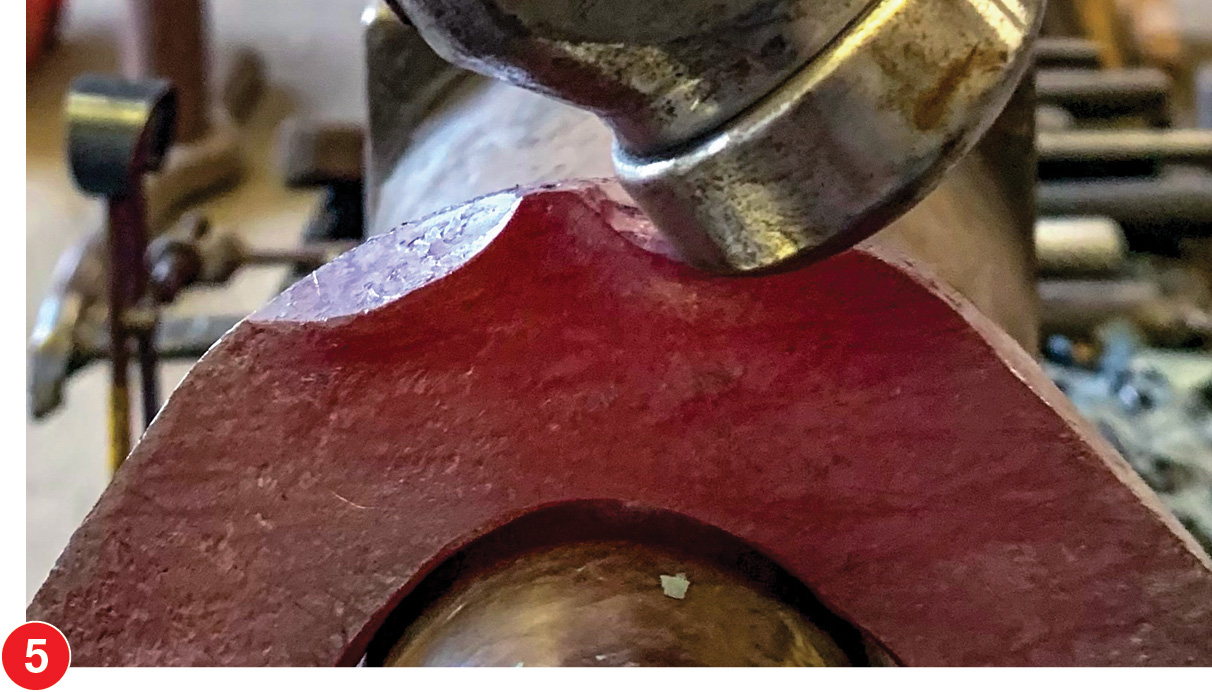
Sometimes you may use the heel (closest to the handle of the hammer or the toe (farthest away from the handle) of the hammer. Use one or the other so the divots don’t become too wide.
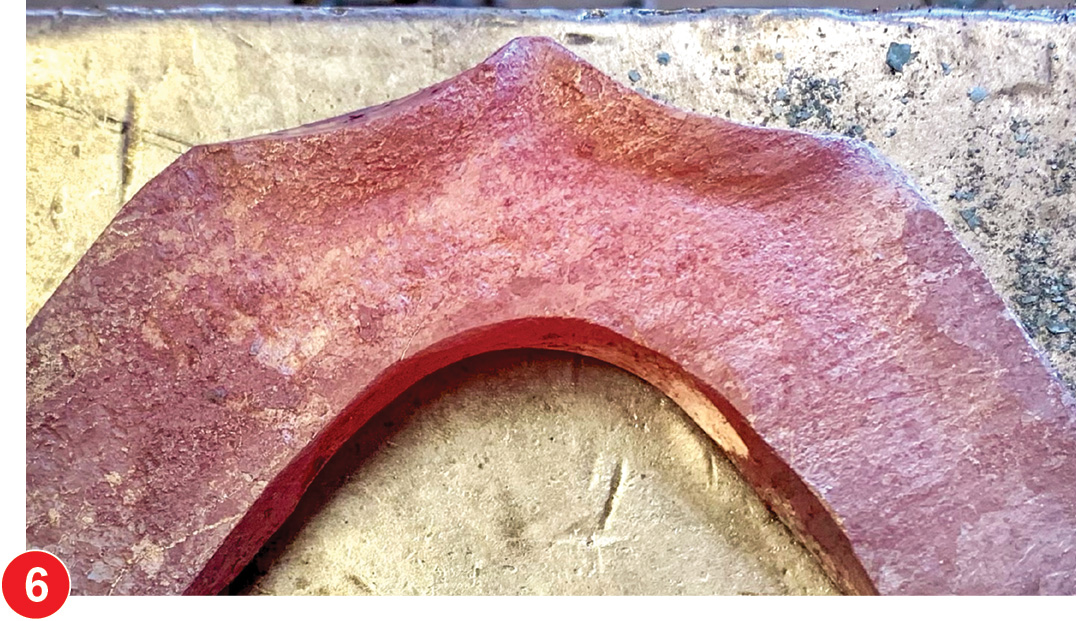
The camera angle is positioned back in this view, showing it is a diamond toe at the ground surface.
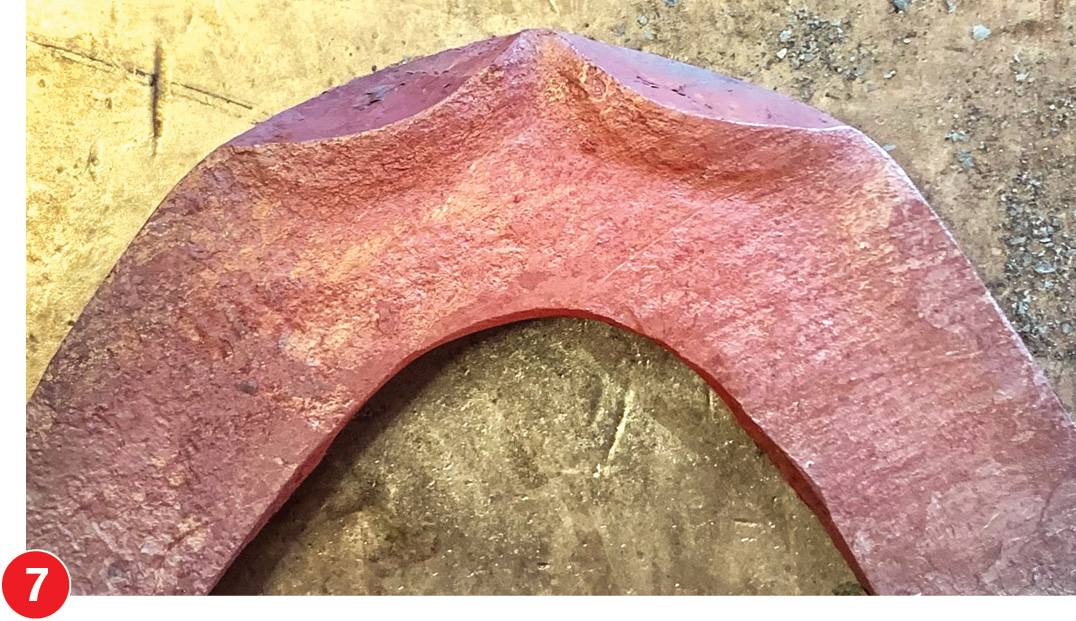
In this view, the camera angle is directly above the toe, showing the foot surface follows the radius of the foot.
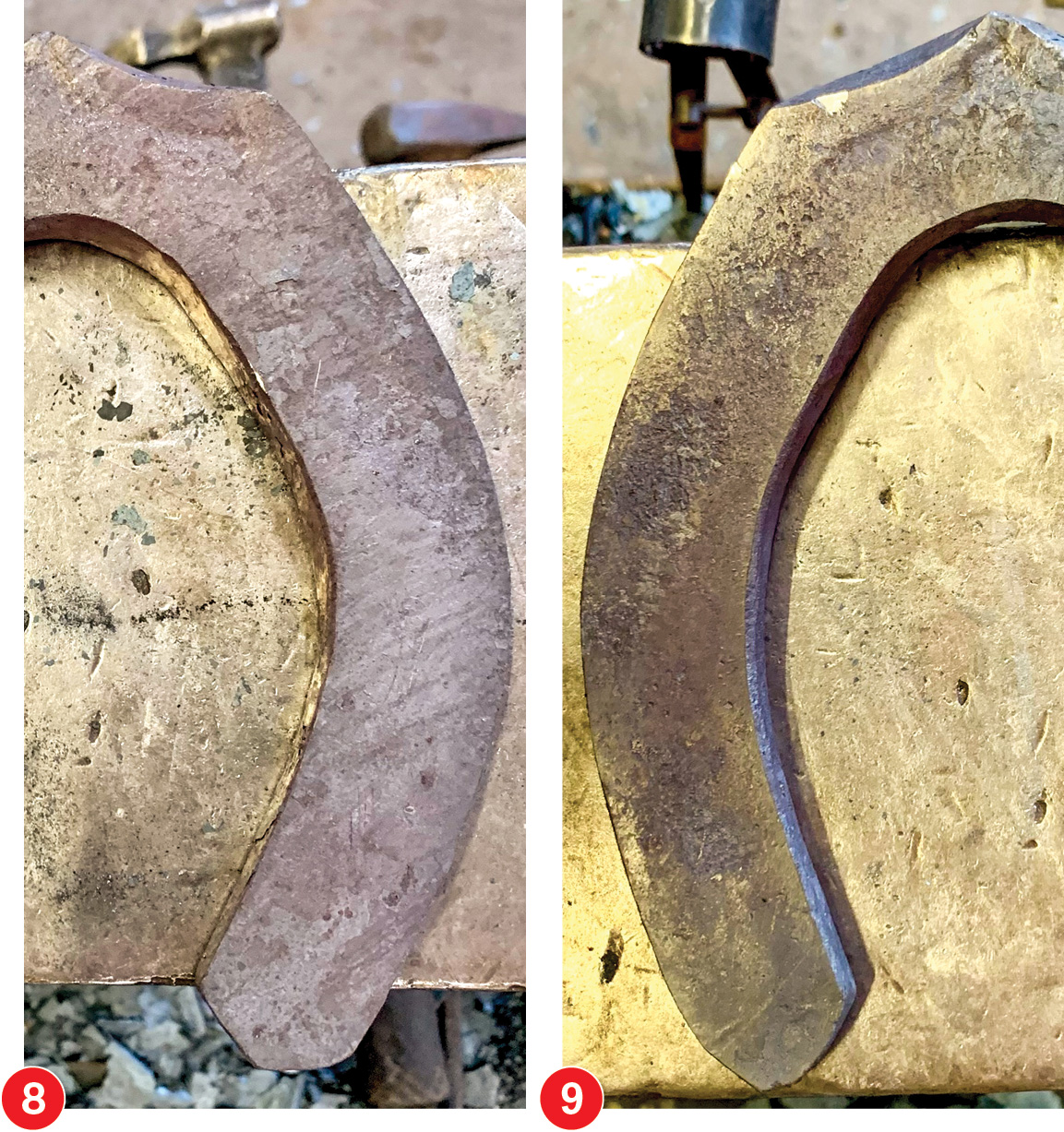
8. I turned the lateral branch. Don’t have too much commitment on this side until you work the medial branch.
9. I turned the medial branch to deliver a roughed out shape with the toe in the center.
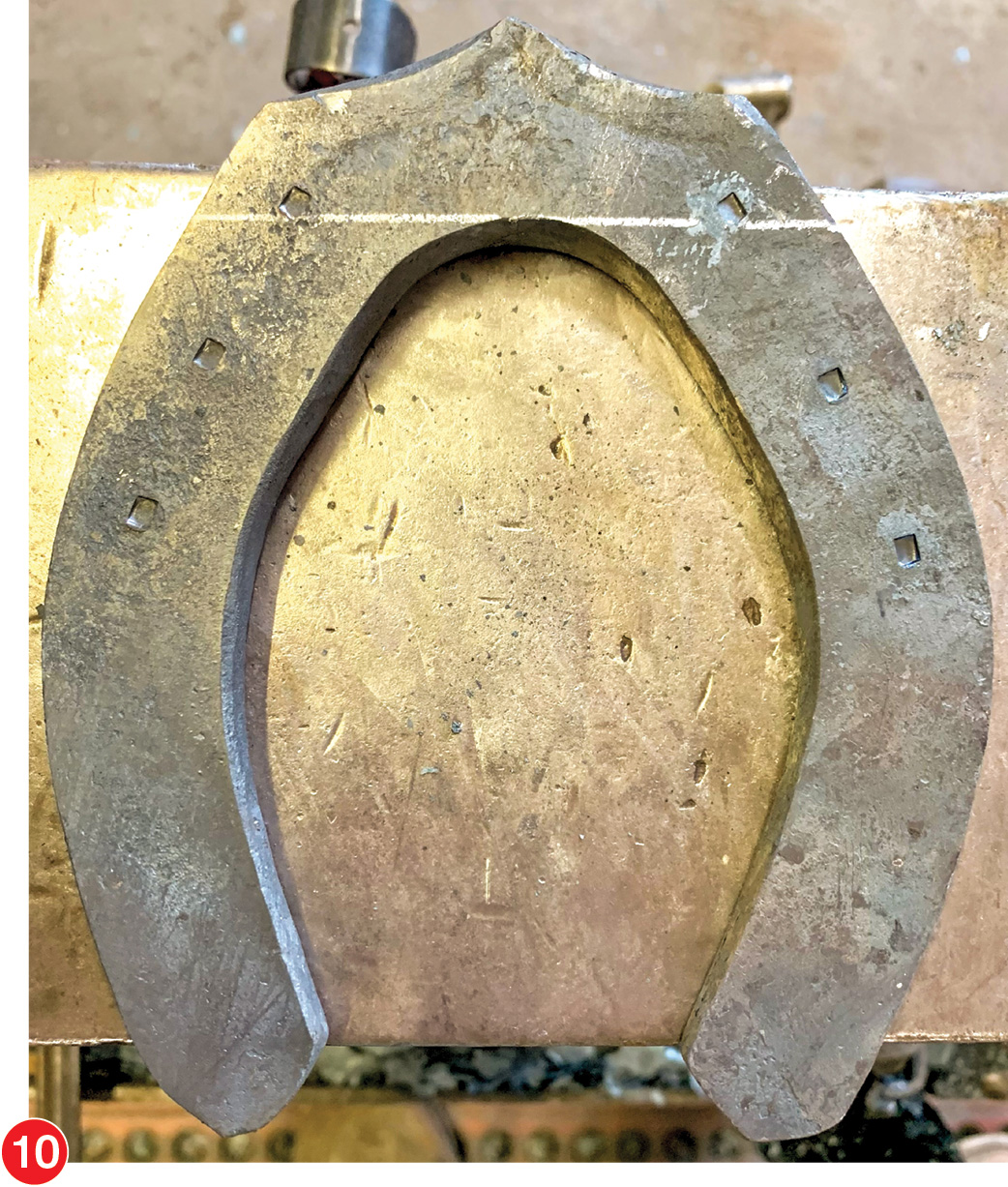
I used a straight edge to chalk line to make sure I’m in line with the diamond toe.
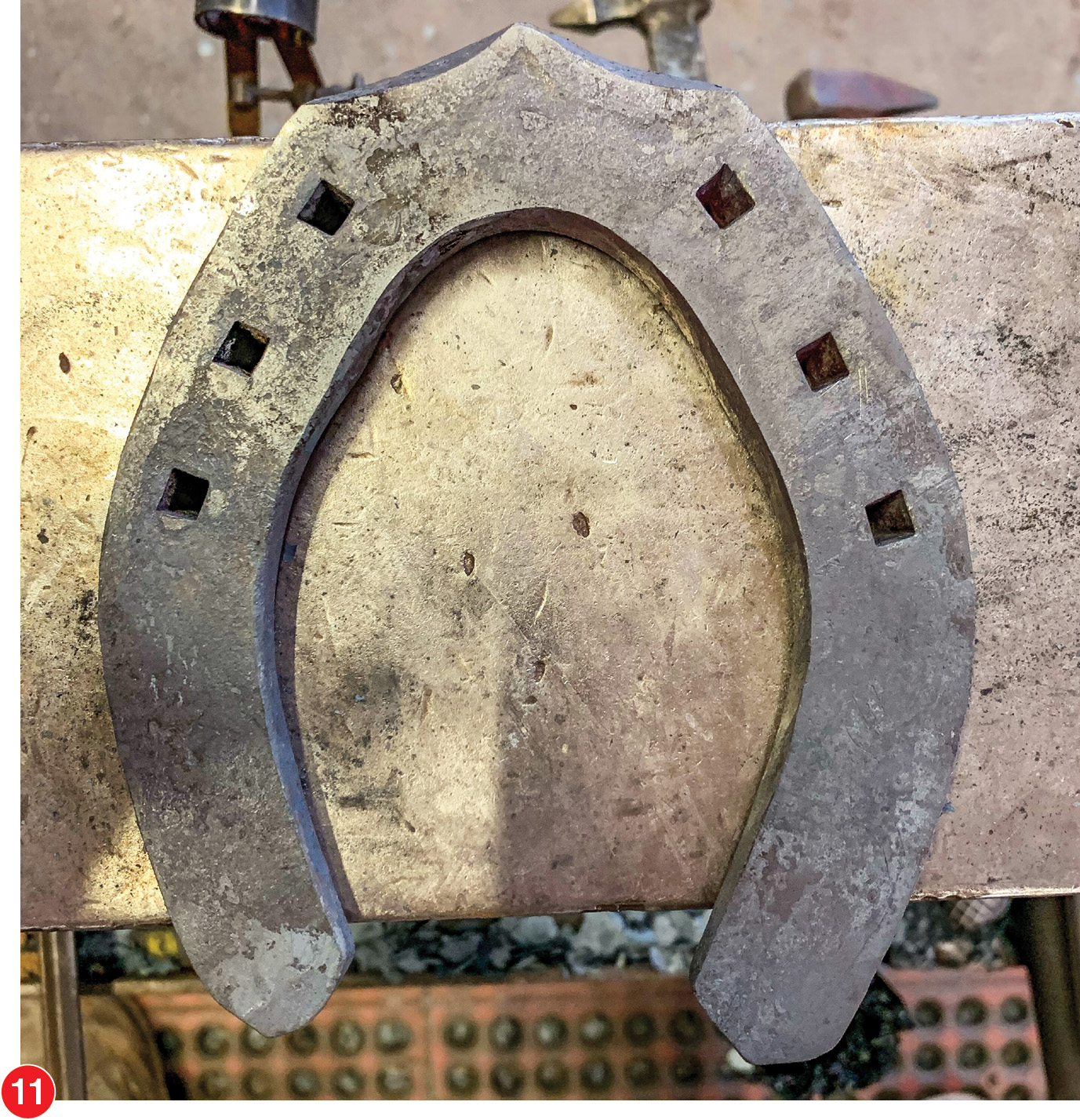
I used a very fine drift to add my nail holes. On plain stamps, I always use a fine drift so I can continue forging it, but don’t make the frog eyes too large or displace as much material.

I used a set hammer to focus my clip material and didn’t have any mishits. On the right shows drawing the clip on the other side.
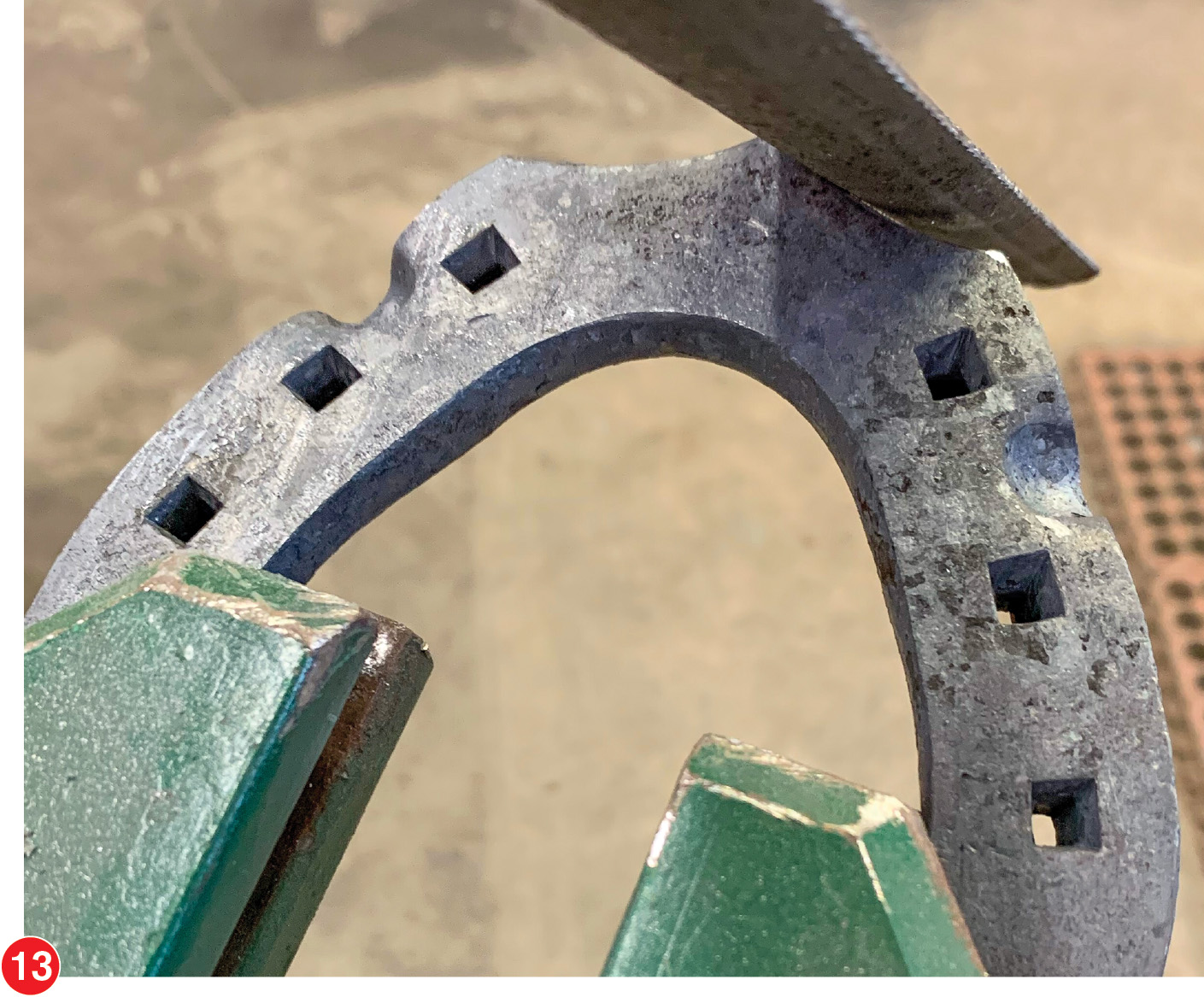
I’ve cleaned up the scoops to make them more eye-pleasing and functional. Use a half-round to hot rasp the diamond. This is perfect for working the diamond toe scoops to one side or the other after the majority of your forging displaced material.
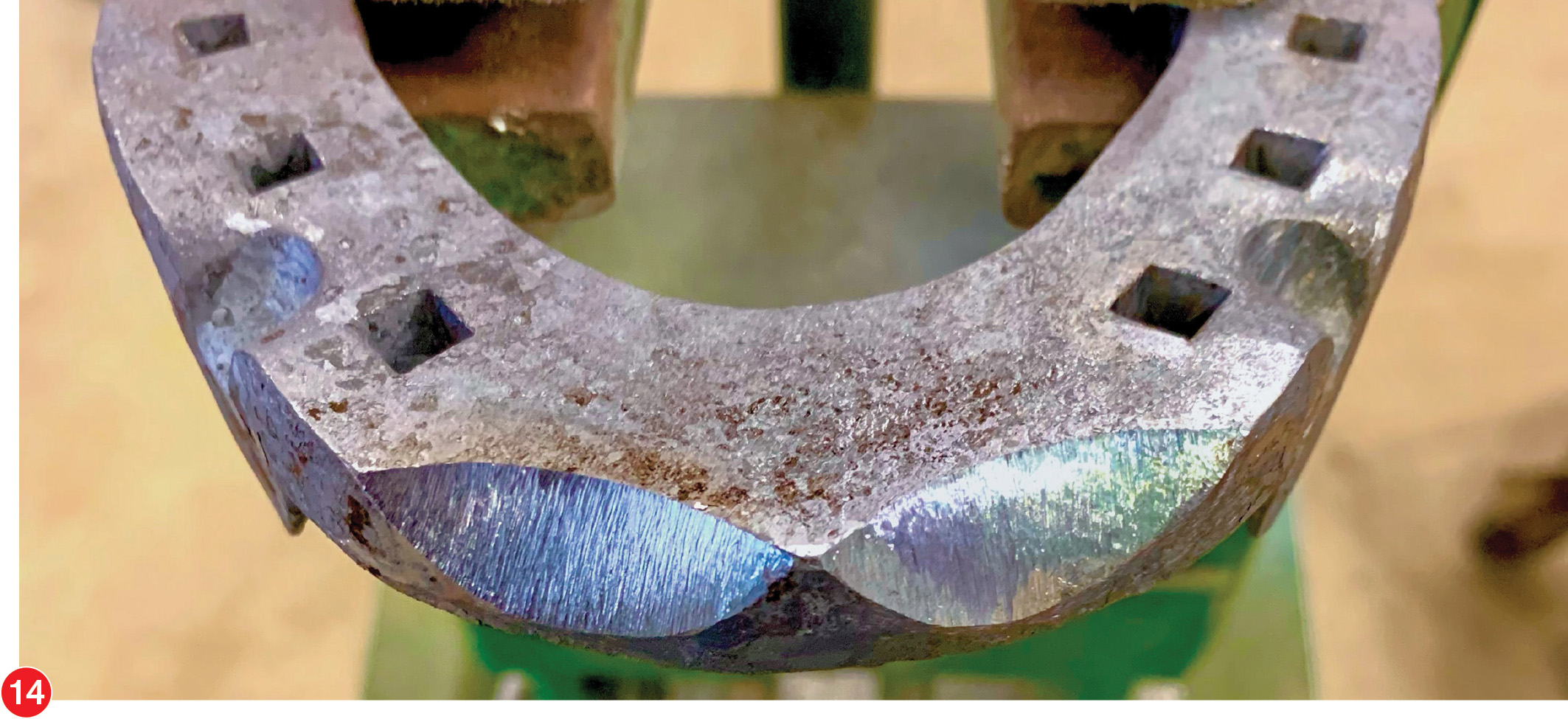
This shows how I tidied up those surfaces. You can still see the original center punch mark. I want to show that scoops don’t go through the entire shoe, but go down and barely miss the peripheral edge of the foot.
HOW TO ENTER
Step 1: Make the shoe as described here by Craig Trnka.
Step 2: Obtain and complete the entry form at AmericanFarriers.com/Summitshoe. If you are unable to download the form, contact American Farriers Journal at (262) 782-4480 to request a form to be sent in the mail.
Step 3: Send in the completed form and your shoe. If you won’t attend the IHCS, mail this entry form and your shoe to American Farriers Journal, Summit Mail-In Forging Exercise, 16655 W. Wisconsin Ave., Brookfield, WI 53045. Your entry must be received in the mail by Jan. 19, 2023.
If you are entering from outside the U.S., DO NOT assign a value to your shoe on the customs declaration form.
If you are attending the IHCS, drop off your entry form and gaited shoe in the Duke Energy Center near the IHCS registration area by 5 p.m., Jan. 24, 2023.
Step 4: Each contestant will receive a free commemorative T-shirt. The top finisher will earn a belt buckle and free 2024 IHCS registration.
T-shirts will be mailed to those who submit a shoe by mail, and immediately given to those submitting a shoe at the Summit. All shoes not picked up at the IHCS will not be returned by mail.

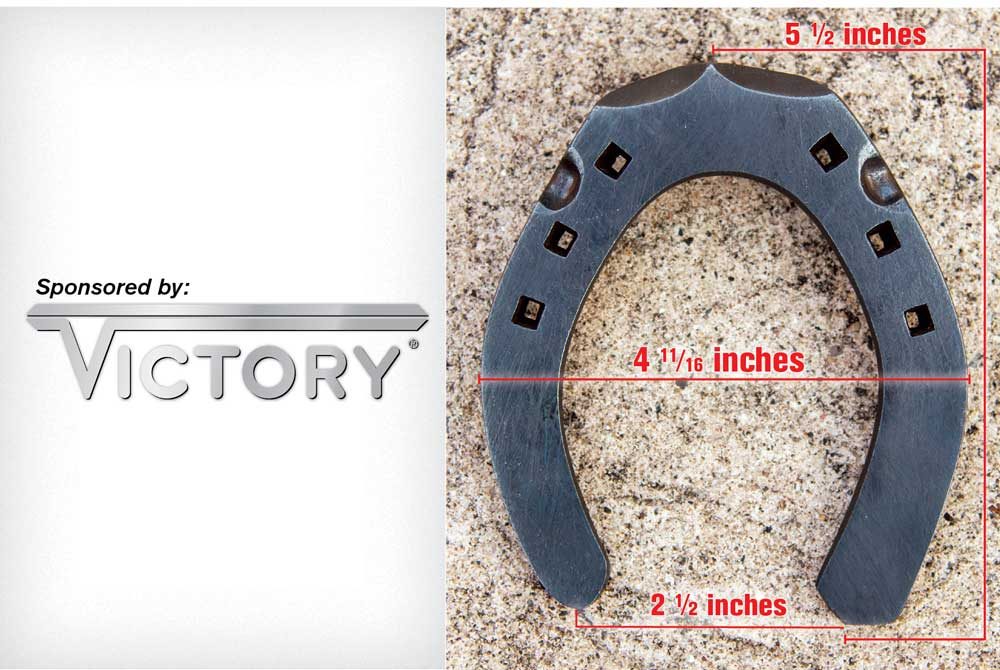







Post a comment
Report Abusive Comment